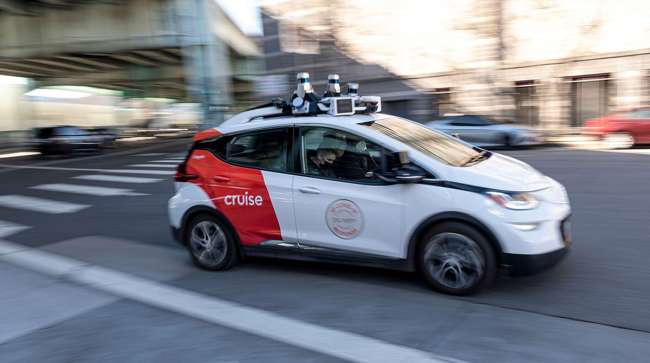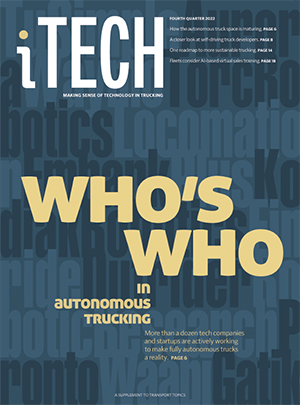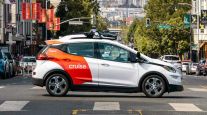The San Francisco Chronicle
Cruise to Upgrade San Francisco Driverless Cars

[Stay on top of transportation news: Get TTNews in your inbox.]
After a string of high-profile incidents on San Francisco’s roadways, Cruise plans to roll out a suite of technological upgrades intended to make its driverless cars more adept at responding during emergencies, the company said Oct. 12.
This means better navigating around double-parked ambulances and fire trucks to avoid blocking traffic, better detection of sirens and flat fire hoses and allowing first responders emergency access to move the autonomous vehicles. The company will also start receiving direct city notifications to help avoid emergency scenes altogether.
In an interview, Cruise Vice President of Global Government Affairs Prashanthi Raman said the improvements were informed by the company’s ongoing dialogue with San Francisco public safety agencies.
“We really want to launch with communities and not at them,” Raman said, noting that the discussions began even before the company’s fleet hit the pavement. “At Cruise we take it very seriously ... to continue those collaborative discussions from the beginning and throughout any necessary feedback to solve issues that are coming up.”

Who's Who in the Autonomous Space
►Overview of Self-Driving Truck Development
Company Sketches
Click the links to jump to profiles of autonomous companies.
Aurora | Waymo | TuSimple | Gatik | Locomation | Torc Robotics | Waabi | Einride | Plus | Embark | Kodiak Robotics | Robotic Research | Outrider | Pronto
The improvements come amid a tense debate over the expansion of self-driving cars in San Francisco, where public streets have become one of the most closely watched training grounds for the nascent technology.
Cruise officials pointed to a recent study they conducted in partnership with the University of Michigan Transportation Research Institute that showed Cruise vehicles had 65% fewer collisions than did human ride hails in San Francisco, and 94% fewer collisions in which the taxi was the primary contributor.
Both the General Motors-owned Cruise and Alphabet-backed Waymo operate fleets of robotaxis to shuttle passengers over San Francisco’s winding and busy roads.
While both companies boast of having tens of thousands of people on waiting lists for their driverless service, not all reception has been as enthusiastic.
In August, the San Francisco City Attorney’s Office asked California regulators to halt its approval of the two companies’ unrestricted expansion, saying the city “will suffer serious harm” as the robotaxis expand their service in daytime hours.
The city officials pointed to at least 58 incidents since April 2022 where Cruise and Waymo’s driverless taxis interfered with emergency response efforts.
These included at least two instances in which Cruise vehicles ran over fire hoses, and another in which a Cruise car intruded on an active fire scene for 30 minutes before it was directed away, the August motion stated.
But the most troubling incident to date came weeks later, when a human driver in downtown San Francisco struck a woman crossing the street, and hurled her into the path of a Cruise taxi. The Cruise vehicle pinned her under its rear axle and a tire after running her over.
The incident drew national headlines and marked the city’s first crash involving a driverless vehicle to result in severe injuries. However, it remains unclear whether a human driver would have reacted differently in the same situation.
✅ Emergency vehicle prediction behavior and preemptive slowing
✅ Enhanced siren and audio detection
✅ Improved emergency scene detection, including fire hoses and caution tape
✅ Conditional routing and scene exit
Details on our blog: https://t.co/dMETiDJaRz — cruise (@Cruise) October 12, 2023
Many of Cruise’s upgrades, including technology that detects a deflated fire hose and an enhanced emergency scene recognition system, appear to address the specific issues outlined in the city’s filing.
The California Public Utilities Commission was scheduled to discuss San Francisco’s request for a rehearing on Cruise and Waymo’s expansion Oct. 12 in a closed-session meeting.
Cruise is also complying with a Department of Motor Vehicles request in August that the company reduce its San Francisco fleet by half while the DMV investigates recent crashes involving Cruise’s robotaxis.
In a statement, San Francisco police spokesperson Evan Sernoffsky said the department has been communicating with autonomous vehicle companies to help improve their technology.
“We welcome any effort by these companies to improve safety measures. Our No. 1 priority is public safety and the SFPD is committed to protecting people in our city,” Sernoffsky said.
Want more news? Listen to today's daily briefing above or go here for more info
“This is an admission by Cruise that their software wasn’t safe, and it’s taken them months to make adjustments to their technology,” Supervisor Aaron Peskin said in a statement. “They are still using San Francisco as a testing ground and the state of California still refuses to hold them to reasonable public safety standards.”
Raman said the company understands that the technology is going to attract outsize attention on its mishaps.
“I think for us, it’s really about the fact that we’ve driven more than 5 million miles, and we’re going to see some rare events that happen with Cruise first,” she said. “We can’t expect perfection, but we do believe that these will help reduce accidents on the roadways in the aggregate.”
— Ricardo Cano contributed to this report.
Distributed by Tribune Content Agency, LLC




